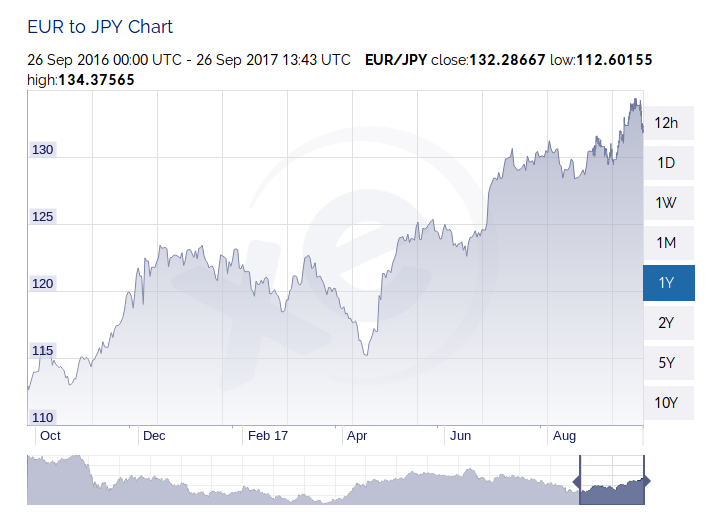The cheapest yen for your euro
Comparing different ways to pay in Japan
October 11, 2017
When it comes to traveling and getting the local currency I am usually too lazy to research my options and just end up using ATMs. With many banks especially in Europe that is not a problem since there is usually no fees involved. However outside of Europe you will find that most(if not all) banks will charge a nontrivial amount for cash withdrawals on top of a exchange rate for the currency. Now that my stay is a lot longer than usual I wanted to dig into the details of just how to maximize the value of my euros.
Disclaimer: I am not an expert in currencies or finance and might make some mistakes in my assumptions, research, math and observations so consider this as some guidelines rather than the absolute truth. Most things I will talk about are subject to change over time or situation so don't take them at face value but as possible options to research yourself.
How to pay in Japan
Japan's currency is the Japanese yen and you generally cannot pay for anything outside of airports with any other currency. Cash is king but some places will accept credit/debit cards. Cash will be necessary no matter what, which means you will either need to exchange cash or use an ATM to get yen.
The value of the euro compared to yen
The value of currencies and in this case the exchange rate between the yen and the euro is the main factor to how much money you get when you exchange your currency. The rate is speculative and everything from national to international events/regulation/situations/trade and more will affect the value of a currency. One way to take advantage of this volatility is to make purchases, withdrawals or exchanges on days with a favorable exchange rate but realistically that is not always possible.
As you can see from the chart below I am quite lucky that the euro has risen ~15% in value compared to the yen in just five months before the start of my exchange. The last time I visited in 2015 the exchange rate was also favorable hovering around 130JPY per 1EUR.

Comparing our options
All examples will use a market exchange rate of 135JPY for 1EUR and all fees will be calculated towards the market rate, not the given exchange rate by the bank/card.
Exchange money in a bank
This is the old school way of doing things. You bring a big pile of cash to the bank and buy the target currency at a hopefully good exchange rate. The exchange rate will differ from bank to bank. In Finland I observed rates up to 6% different from the market while in Japan most banks hovered around 3%. If you do not find a good deal in Finland I suggest exchanging your cash at a Japanese bank in the airport(check the rate before you do!).Price of 10.000¥ in Japan = 76,36€
Price of 10.000¥ in Finland with Forex = 78,80€
pros- You can return any left over cash with a receipt free of charge with some banks
- You can exchange at speculative peak exchange rates
- Risk of carrying a lot of cash
Withdrawing yen from an ATM with euros
Using an ATM outside of Europe with most European banks will end up with rather big charges depending on the bank. Some banks will also have extra charges after certain amount of ATM withdrawals. My bank charges 2€ + 3% + the additional visa international exchange fee of ~2.15%. So you end up with a whopping 2€ + 5.15% fee. So if your only option left for cash is an ATM you should withdraw as large sums as possible without having leftover yen when you leave. Keep in mind that with ATM you can time your withdrawal on a day the exchange rate happens to be good, which could save you around 1.5% on some volatile days.Price of 10.000¥ with Visa electron and Nordea on a 7/11 ATM = 78,09€
pros- Convienient
- No need to carry a lot of cash
- Quite expensive
- Possible limits with cards/withdrawals
- Possible extra fee for some ATMs
- Your debit/credit card could break/dissapear rendering you with no way to get cash or pay
Paying with a credit/debit card
Paying with a credit/debit card will use a very good exchange rate that in my experience only differs about 0.2% from the market rate. However my visa electron card takes a 1.95% exchange fee ending up with an around 2.15% total fee.Price of 10.000¥ card purchase = 75,70€
pros- Cheap
- More secure than cash
- Availability is bad in Japan